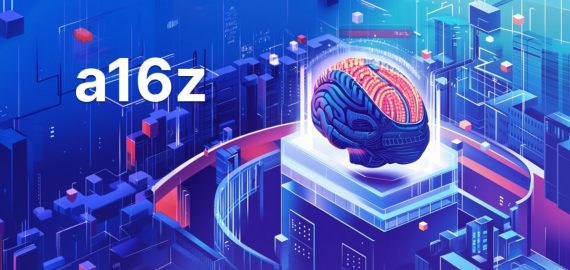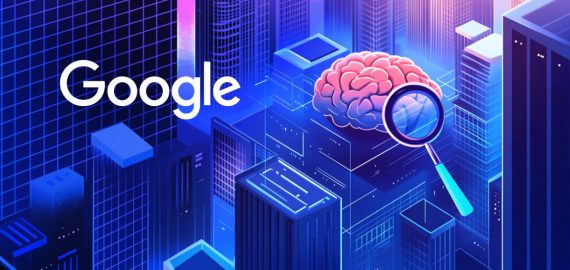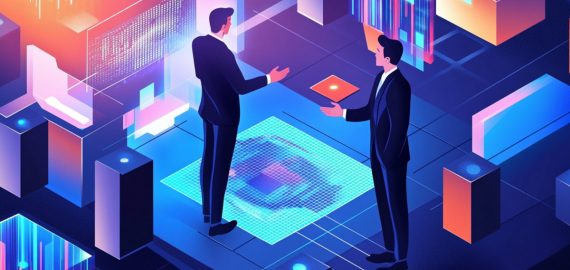Demystifying ZK Technology: zkLink’s Approach to Solving Blockchain Scalability and Interoperability Challenges


In Brief
Vince Yang, CEO of zkLink, discussed blockchain technology, the crypto mining state, and innovative solutions for scalability and interoperability ahead of Hack Seasons Conference.
In anticipation of the upcoming Hack Seasons Conference, we had a chance to talk with Vince Yang, the CEO of zkLink, for an in-depth discussion about the blockchain industry. Vince shared valuable insights into the world of ZK technology, the current state of crypto mining, and zkLink’s innovative solutions for blockchain scalability and interoperability.
Many entrepreneurs are drawn to their field by a specific moment or event. What sparked your interest in this industry, and how has your passion evolved over time?
I joined the crypto industry in 2019. Before that, I was an engineer building powertrain systems for the automotive industry. My first encounter with crypto was in 2016 when I attended a local meetup in Shanghai.
One of the Ethereum co-founders was there to introduce Ethereum. There was a panel discussion of the technological differences and future outlook of Ethereum compared to Bitcoin. I became very interested in the Bitcoin whitepaper, which I carefully read after the meetup.
In 2019, a close friend who had returned from the US to China and joined the crypto industry introduced me to what he was doing. We had lengthy discussions about the long-term potential of blockchain technology. After several weeks of debate, I was convinced and decided to leave the automotive industry to join the blockchain space.
I started as a Bitcoin miner, joining a Bitcoin miner manufacturing company. I learned about everything related to Bitcoin mining, from power plants and mining rigs to ASIC chips, mining software, and how to deploy miners to mining farms. I also learned how to connect to mining pools, trade Bitcoin, and use various types of wallets.
About a year later, during the DeFi Summer of 2020, I started learning about DeFi applications like Uniswap, AAVE, Compound, Curve, and Sushi. It was fascinating to see the applications being built on top of blockchain technology beyond just mining and trading crypto.
Given the crypto restrictions, how do you see the state of mining in China right now? Are people transferring mining operations to places like Kazakhstan?
Bitcoin mining was essentially banned in China in 2021. Before the ban, China accounted for about 70% of the total hash rate for Bitcoin and Ethereum. Now, it’s almost completely gone from China. Most miners I know have migrated overseas.
They’re building mining farms in Kazakhstan and the Middle East, Africa, Russia, the CIS region, Europe, the United States, Canada, and Australia. Basically, they’re setting up operations anywhere with sustainable, stable, and affordable electricity.
It’s interesting to see how resilient Chinese miners have been. Many major players are still in the game, just operating from different locations. The main Bitcoin mining rig manufacturers are still Chinese companies like BITMAIN and WhatsMiner.
It’s unfortunate that mining has left China, as the country had abundant cheap energy that could have made it a huge success for the Chinese economy. But now, miners have simply changed their location and moved overseas.
Your company leverages ZK technology. Can you explain how you use it and what the benefits are for the whole ecosystem?
In 2020, during the DeFi Summer, everyone realized that using Ethereum was too expensive and slow. Transactions could take hours or even days, and the blockchain would become congested. This highlighted the need for scaling solutions.
In the realm of rollups, which have become a mainstream scaling solution for Ethereum, there are two major types: ZK rollups and optimistic rollups. ZK rollups have an advantage in scalability because they can compress and scale further than optimistic rollups as the technology matures. ZK proofs allow you to compress hundreds of thousands of transactions into one batch and perform a single on-chain verification.
Another beneficial property of ZK proofs is that they’re trustless and mathematically secure. Everything is verifiable with mathematics, providing a trustless way to scale the blockchain securely.
At zkLink, we’ve been building ZK solutions since 2021, when there were only about 10 teams working on ZK solutions. We believe this technology can be a real game-changer not just for scalability but also for privacy and interoperability between different chains.
Do you think ZK is getting enough attention in the crypto community right now, given the recent focus on AI and real-world assets?
You’re right that ZK is not as popular now as it was in 2021 and 2022. Currently, people are more excited about topics like AI and the resurgence of DeFi. However, it’s important to remember that ZK is an infrastructure technology, not an application technology. It’s inherently more technical and “boring” compared to flashier topics.
When ZK was at the height of its popularity, many people were talking about it without fully understanding the underlying technology. Now that some early-stage products like ZK layer 2s are live on mainnet, the results haven’t been as spectacular as some hoped, especially compared to optimistic layer 2s, which currently offer better developer and user experiences.
However, this doesn’t mean ZK has no future. I strongly believe there will be a comeback for ZK technology. It has applications beyond just scalability and privacy, including potential uses in AI and machine learning. The technology’s core properties haven’t changed, and it’s just a matter of time for developers and infrastructure builders to create more user-friendly and scalable solutions.
The current quieter period might actually be beneficial, allowing real builders to focus on development without the hype. We need to give it more time and patience.
Can you elaborate on the differences between zkLink Nova and zkLink X and how these two solutions complement each other?
zkLink Nova is the first aggregated layer 3 unifying Ethereum and its layer 2 rollups. It’s an EVM-compatible execution environment, meaning any type of application can be built on it. Developers can access native assets and liquidity from Ethereum and various layer 2s like zkSync, Starknet, Arbitrum, Optimism, and BASE.
zkLink X, on the other hand, is an application-specific scaling engine designed for high-performance applications, particularly order books, that can match the user experience of centralized exchanges. It provides access to tokens from any chain and is highly scalable, potentially operating at hundreds of thousands of transactions per second. It’s aimed at order book-based applications and potentially blockchain gaming.
In essence, zkLink Nova is a universal-purpose layer 3 blockchain for any type of application, while zkLink X is a high-performance, application-specific scaling engine primarily for order book-based systems. Both solutions aim to aggregate liquidity and provide access to assets from different chains and rollups.
In terms of security, do zkLink Nova and zkLink X provide the same level of Ethereum-equivalent security?
They’re actually a little bit different. zkLink Nova is an Ethereum multi-layer suite. It’s connected to Ethereum layer 2s and Ethereum layer 1. It consolidates and synchronizes the states across different Ethereum layer 2s and the Ethereum layer 1 mainnet. It inherits the security, economic security, and consensus from Ethereum layer 1. So, we consider it to be Ethereum-equivalent in terms of the security of the layer 3 chain.
As for zkLink X, the scaling engine itself can be customized and decoupled. We have decoupled the different components of the rollup framework. So, application builders can choose to use different DA solutions. They can choose different runtime execution layers. There can be different types of VMs. zkLink X can be ZK EVM-like or parallel. You can also choose different settlement destinations. You could connect to different layer 1s and settle on Solana or Avalanche.
The security characteristics depend on the settlement destination and the base chains that the application chooses to have. In terms of multi-chain state synchronization, zkLink X offers a bit more flexibility to connect to more chains at the cost of making a sacrifice on security. So, it’s not strictly equivalent to Ethereum. It’s equivalent to the chains combined together or to the least secure chain.
For example, if you have Solana and Ethereum, people may generally consider Ethereum to be more decentralized and secure than Solana at the moment. So, if a zkLink X solution application chose to have Solana and Ethereum at the same time, you could argue that the security of the system equals that of Solana.
How does zkLink Nova handle the aggregation of assets from different Layer 1 and Layer 2 blockchains?
I should clarify that zkLink Nova’s approach is focused on the Ethereum ecosystem. It only connects to Ethereum and Ethereum layer 2s. It doesn’t connect to Solana or any other layer ones at the moment.
There are different types of assets in terms of liquidity aggregation and unification. For native Ethereum tokens, all the layer two Ethereum tokens are bridged from Ethereum layer one. It’s the same for zkLink Nova. Tokens are bridged to Nova from Ethereum layer 1 and Ethereum layer 2s so they can be natively merged into one token. Each token on zkLink Nova has already been merged together, even though it comes from different chains.
Major mainstream stablecoins like USDT and USDC can also be merged on Nova as long as the source of these stablecoins is considered secure. For example, if you have native USDT and USDC on Base, and you bridge them to Nova, they can be merged with the USDT and USDC bridged from Ethereum, as these tokens are issued by the same entity and have the same value, although they’re on different chains.
For native tokens on different layer 2s (like ZK token on zk-Sync, STRK token on StarkNet, ARB token on Arbitrum, or OP token on Optimism), these can also be bridged over to Nova and become interoperable on the same chain. You can trade these tokens with each other in one AMM protocol, borrow them in the same lending protocol, or use them as collateral for various purposes.
This gives developers and application builders an opportunity to access native tokens and assets from these different connected layer 2s in one place with unified access.
Can you elaborate on zkLink Nova’s approach to connecting rollups from different stacks and what the trade-offs are involved?
There are other aggregation technology providers out there. For example, Polygon is pushing for its zkEVM for the aggregation layer. You also have zkSync hyperschains with their shared bridge, and OP Stack has OP Superchains with their shared bridge.
The major difference between zkLink Nova’s solution and these other shared bridge solutions is that we’re stack-agnostic. This means we’re able to connect to Polygon zkEVM chains, OP Superchains, and ZK Stack hyperschains, potentially even StarkNet-derived chains.
The trade-off here is that we have broader connectivity. We can connect to, theoretically speaking, any layer 2s. If we utilize third-party messaging protocols, we could even connect to other layer 1s. However, the trade-off is that we can only have asynchronous compatibility with any of the layer 2s.
This means it’s an async approach. These layer 2s still need to bridge to Nova first, which takes effort and time. This could be a barrier for some users entering the Nova chain and using the applications. But once liquidity enters and users come in, we’ll find ways to incentivize them to stay.
It’s kind of like a flywheel. We have to incentivize and push liquidity on day one, convince people to come and merge liquidities together, aggregate native assets from many different layer 2s and chains, and create a unified user interface. We need to create aggregated DeFi protocols, AMMs, and perpetual DEXes to deliver the kind of user experience we want. Once we get there, I think the flywheel will start to run and become self-reinforcing.
How does zkLink X enable the creation of custom App-Rollups with native token access across linked L1s and L2s?
zkLink X is the solution that powers high-performance applications like orderbooks. We recently launched a new product with the ApeX team, one of the top orderbook DEXes in the space. They’re trading on average about $100 million a day, sometimes close to $1 billion in trading volume per day.
They recently launched a mini-chain version of ApeX using the zkLink X solution. They want to connect to different layer 2s and layer 1s, including Ethereum, Solana, Base, Arbitrum, and Optimism. They aim to offer a similar user experience to buy and trade any tokens from any chain on their user interface. They chose to work with the zkLink X solution as the engine to provide access to liquidity and tokens from different chains.
These are the three major trends I see for the next five years.
You’ll be attending Hack Seasons Conference and EthCC soon. Can you share your plans for the events?
We’ll be speaking at several different side events, and we’re very excited to share our vision and plans with the others. We’ll discuss the developments, challenges, and opportunities of aggregation technologies from different industry players.
We’ll also be speaking on some Ethereum-related topics and rollups, ETH scaling, and we also want to talk about the most recent progress with interoperability and layer 2s and layer 3s in general.
Disclaimer
In line with the Trust Project guidelines, please note that the information provided on this page is not intended to be and should not be interpreted as legal, tax, investment, financial, or any other form of advice. It is important to only invest what you can afford to lose and to seek independent financial advice if you have any doubts. For further information, we suggest referring to the terms and conditions as well as the help and support pages provided by the issuer or advertiser. MetaversePost is committed to accurate, unbiased reporting, but market conditions are subject to change without notice.
About The Author
Victoria is a writer on a variety of technology topics including Web3.0, AI and cryptocurrencies. Her extensive experience allows her to write insightful articles for the wider audience.
More articles

Victoria is a writer on a variety of technology topics including Web3.0, AI and cryptocurrencies. Her extensive experience allows her to write insightful articles for the wider audience.

















































